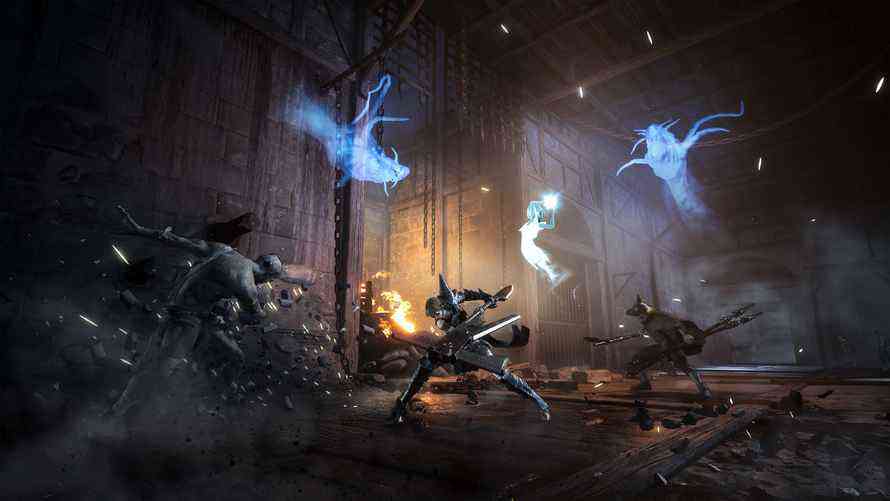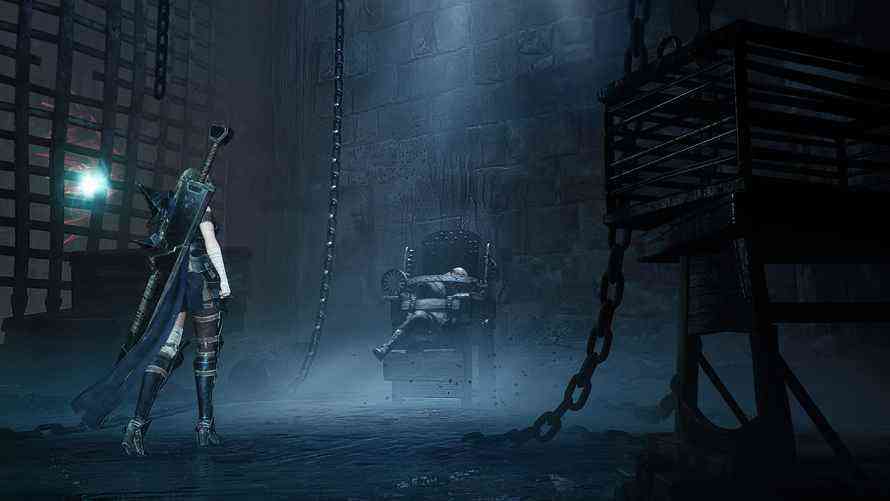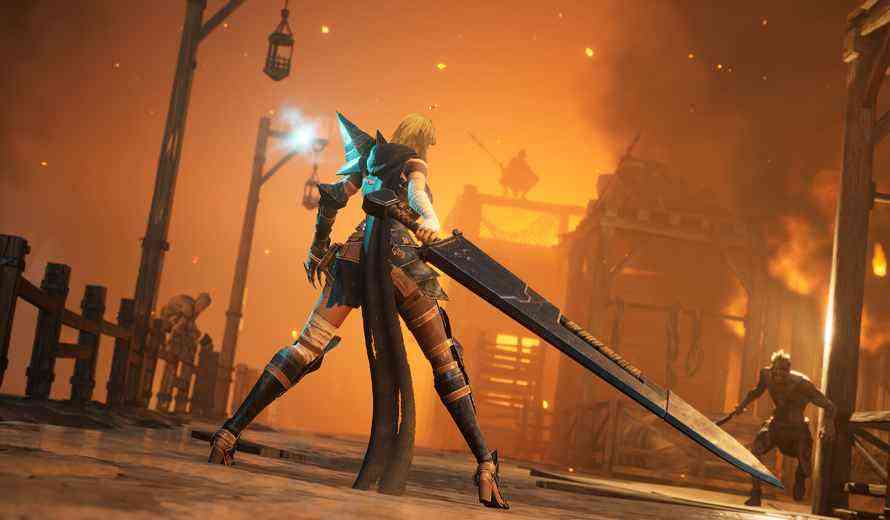Soulstice Review
Despite having it in the game’s title, Soulstice is not a Soulslike. Thank goodness. The Soulsborne clones keep coming, some outstanding, others not so much. Instead, Soulstice pulls inspiration from several other action RPGs/Metroidvanias. A partial list might include Devil May Cry, Bayonetta, and Neir: Automata. But is Soulstice more than a Frankenstein’s monster of patched-together influences?
A Tale of Two Sisters
There are many action games and RPGs where the player controls multiple characters, switching between their various abilities and fighting styles. In Soulstice, the conceit is that you are controlling Briar, a weapon-wielding fighter, and Lute, her magic-user sister. Briar is flesh-and-blood, while Lute is a ghostly apparition. Together they form a Chimera, a mystical union of souls created by a mysterious Order to do battle. Once there were other Chimeras, and part of Briar and Lute’s mission is to discover the fate of their kindred warriors.
If you’ve played, say, any videogame ever, you can probably guess that Briar and Lute are fighting an evil force. A tear has appeared over the Sacred City of Ilden, vomiting all sorts of monsters into the world. Since all other Chimera apparently has better things to do, your task is to fight the creatures, close the tear and save the city. Along the way, you’ll meet some allies, but by and large, saving the world falls to Briar and Lute.

Briar is a warrior, doing melee damage with swords, polearms, hammers, and axes. Lute is a magic user and ranged attack specialist. Briar’s magic includes two types of force fields. One can reveal and trap spirit enemies as well as show hidden platforms; the other can allow Briar to collect mass amounts of the red crystals that are the game’s currency. Throughout the game, Briar and Lute can upgrade their weapons, learn new and deadlier skills and combos, and purchase consumables. Unfortunately, leveling and upgrading can’t be done in the field but at the end of a chapter or by visiting The Observer. He’s a merchant and dumper of exposition and narrative direction that appears at crucial moments.
I’ll Have the Combo, Please
By far, the main focus of Soulstice is its combat, which feels like a synthesis of Devil May Cry and Bayonetta, complete with a rating and cash prizes at the end of each battle. Generally speaking, combat is fast, fluid, and full of opportunities to use both Briar and Lute’s specialties. The game’s many combo attacks are not especially difficult to learn, but using them efficiently in battle will take some practice. The more successful Briar and Lute are, the faster their Unity meter fills, allowing for some devastating Synergy special attacks. While some unlucky cannon fodder figures are scattered around the levels, actual enemies spawn through the magical mystery tear.
Combat is fun and gets progressively more challenging as the game progresses, and more powerful enemies are introduced. One mechanic, however, works better in concept than in practice. At points, a button prompt will appear, cueing the player that they can deflect an attack. Thanks to the game’s atrocious lock-on system and multiple cues appearing simultaneously, coordinating a deflection with the current enemy is frustrating and inconsistent. Additionally, a missed deflection opens Briar and Lute to extra damage.
Combat is the only time when the camera can be freely rotated. We’ll have more to say about the camera later.

The Grimdark Streets of Ilden
The entirety of Soulstice takes place in the various districts of Ilden, a medieval-looking fortress city on the edge of an ocean. Once a thriving port, Briar and Lute explore its dungeons, docks, prisons, and merchant zones as they draw closer to the tear. The population having been killed or turned to monsters, it’s a pretty empty place, with a few NPCs to meet along the way and lots of crates and barrels to break. Visually, the city is one of the best parts of Soulstice. Ilden is detailed and appropriately grimdark. It looks a bit like an Elden Ring legacy dungeon, with a generally dark and muted color palette. Briar and Lute solve several environmental puzzles to progress, like finding and coordinating switches that lower a bridge. The puzzles are generally simple, and Lute almost always hints at the solution.
Treasure-filled side rooms and areas aside, Soulstice is a linear game. Hidden orbs transport Briar and Lute to optional, repeatable battle arenas. These are useful for grinding for currency, which seems to be in relatively short supply. When you die in Soulstice, you can respawn at a checkpoint or the start of a mission. You don’t regain your consumables, nor do you lose your currency. You can also replay areas if you want to boost your rating.
The Fixed Camera Needs Fixing
When I played an early preview of Soulstice and then later, the entire demo, one facet of the game stood out as really needing revision. It still does. The fixed-view camera moves with the characters but never finds the sweet spot. Zoomed out, the characters are often far too small to blend into the scenery. Zoomed in, it obscures too much of the environment and gets in the way of exploration. It also gets in the way of the game’s platforming, which isn’t that great or precise, to begin with. Maybe I’ve just played too many action RPGs and Soulslikes with a freely rotating camera. The camera does turn in battle, but sluggishly. I never felt that the choice of a fixed camera fit the game.
Briar is conceived as Bayonetta’s slightly-less-explicitly-sexy cousin (though there is brief nudity in some cutscenes). Her art style uses an attractive, slightly cartoony, outlined aesthetic. Lute is a wide-eyed Casper-like ghost that hovers over Briar’s shoulder. Lute also never shuts up. The characters are generally over-written, and the pair repeatedly comment on everything, especially during combat. While Lute is mechanically sound in battle, she is Jar-Jar-level annoying as a character. Both characters are voiced competently but with a flat detachment that undercuts some of the drama of, you know, saving the world.

At least on PC, Soulstice has a relatively generous number of ways to configure graphics, audio, and controls. Aside from some framerate stutters and lengthy loading times, I didn’t experience any technical issues.
Bargain Bayonetta or Does the Devil Cry?
It’s nice to play an action game more influenced by Devil May Cry than Dark Souls for a change. Soulstice makes a good case for its combat and its synthesis of two characters with distinct fighting styles. The characters themselves aren’t particularly interesting or sympathetic, and their quips and asides grow annoying. The game’s fixed camera and how it hamstrings enjoyable platforming and exploration are most troubling. Soulstice isn’t as entertaining or polished as the games from which it draws inspiration, but it’s worth checking out for gamers growing tired of the Soulsborne template.
***PC code provided by the publisher for review***
The Good
- Enjoyable combat
- Detailed environments
- Gentle learning curve
The Bad
- Frustrating camera
- Repetitive dialogue during combat
- Derivative mechanics

